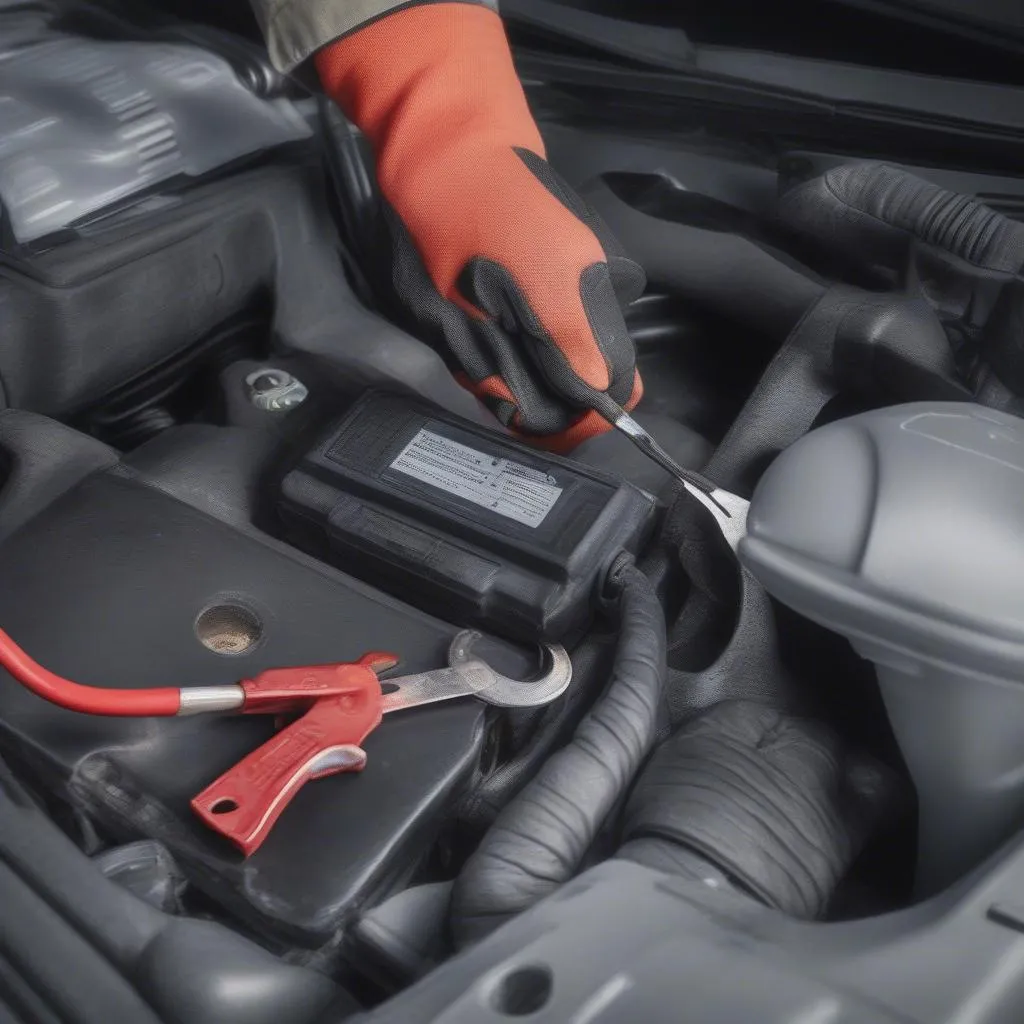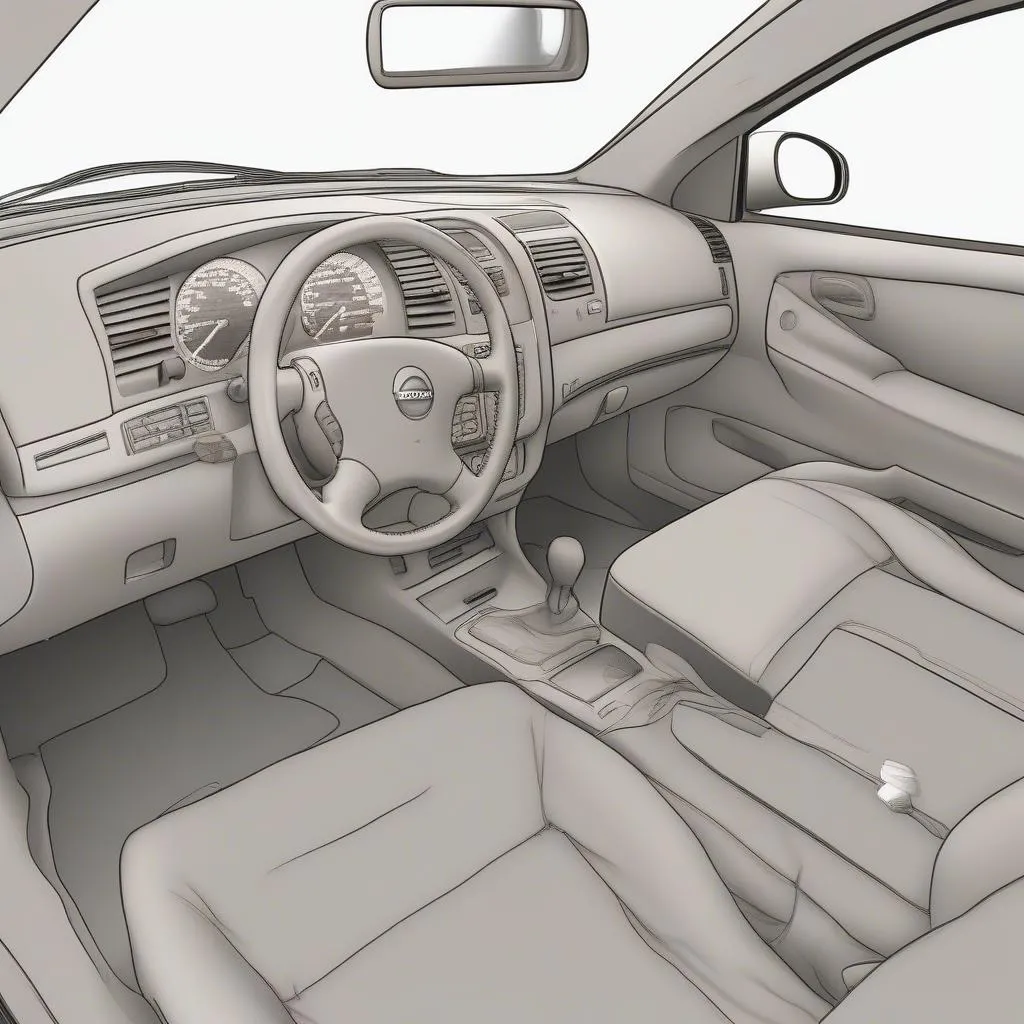If your 2009 Ford F150’s anti-theft system is acting up, you might be locked out of your own truck. Don’t worry, you’re not alone. This is a common issue and there are ways to reset the system and get back on the road. This article will guide you through the process of identifying the problem, the steps to reset your anti-theft system, and answer some frequently asked questions.
Understanding Your Ford F150’s Anti-Theft System
The anti-theft system in your 2009 Ford F150 is designed to deter theft by preventing the engine from starting without the correct key. It works by using a transponder chip in your key that communicates with the vehicle’s immobilizer system. When the signals don’t match, the system assumes a theft attempt and activates the immobilizer, preventing the engine from starting.
Recognizing the Signs of an Anti-Theft System Issue
Several indicators can point to a problem with your F150’s anti-theft system:
- Rapid Flashing Security Light: A quickly blinking security light on your dashboard is a telltale sign that the system is engaged.
- Engine Cranks but Won’t Start: If you can hear the engine cranking but it refuses to fire up, the anti-theft system could be preventing ignition.
- Key Not Detected Message: Some models might display a “Key Not Detected” message on the instrument panel, indicating a communication issue between the key and the system.
What You’ll Need for the Reset
Before attempting a reset, gather the following:
- Your Ford F150’s Owner’s Manual: This contains specific information about your truck’s anti-theft system.
- Both Sets of Keys: You might need both your primary and spare keys for certain reset procedures.
Resetting the Anti-Theft System
Here are some common methods to reset the anti-theft system on a 2009 Ford F150. Try each method in order until the issue is resolved:
Method 1: The Key Cycle Reset
- Insert your key into the ignition and turn it to the “On” position without starting the engine.
- Leave the key in the “On” position for 10-15 minutes, allowing the system to recognize the key.
- Turn the key to the “Off” position and wait a few seconds.
- Attempt to start the engine.
Method 2: The Battery Disconnect Method
- Disconnect the negative (black) terminal of your truck’s battery.
- Leave the battery disconnected for at least 30 minutes to discharge any residual power in the system.
- Reconnect the negative battery terminal.
- Try starting your vehicle.
 Resetting anti-theft system by disconnecting the battery
Resetting anti-theft system by disconnecting the battery
Method 3: Using a Diagnostic Tool
Sometimes, more complex issues might require a professional-grade diagnostic tool like those offered by Cardiagtech. These tools can read and clear error codes within the anti-theft system, potentially resolving communication errors.
FAQs about Ford F150 Anti-Theft Systems
Q1: Can a dead key fob battery trigger the anti-theft system?
While a dead key fob battery might prevent you from remotely locking/unlocking your doors, it generally shouldn’t trigger the anti-theft system as long as you’re using the physical key to start the engine.
Q2: How much does it cost to reprogram a Ford F150 key?
Reprogramming costs can vary depending on the dealership or locksmith. However, you can expect to pay anywhere from $50 to $150 per key.
Q3: Can aftermarket car alarms interfere with the factory anti-theft system?
Yes, sometimes aftermarket alarms, especially if not installed correctly, can conflict with the factory system. If you’re experiencing issues after an aftermarket alarm installation, consulting a qualified technician is recommended.
Need More Help?
If you’ve tried these methods and are still experiencing problems with your 2009 Ford F150’s anti-theft system, it’s best to seek professional assistance. Contact Cardiagtech for expert advice or to explore our range of diagnostic tools that can help you pinpoint and address the root cause of the issue.


